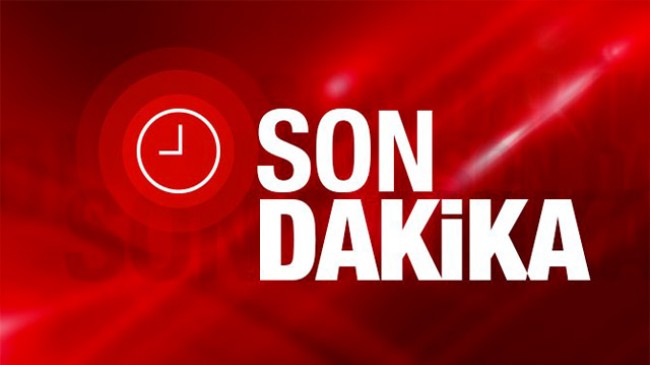Contents

Always use stops to minimize risk in case of a failed cup and handle pattern. Near the high is best – The best cup and handle patterns develop within an existing uptrend and with the price near 52-week highs. Are you ready to discover the secret to spotting profitable trading opportunities? Look no further than the Cup and Handle pattern—a simple and reliable way to identify bullish price action.

- The cup forms after an advance and looks like a bowl or rounding bottom.
- Determine significant support and resistance levels with the help of pivot points.
- Although it’s one of the more popular chart patterns, it also has limitations.
- The older the increase trend, the less likely it is that the cup and handle will be an accurate indicator.
- There are several ways to approach trading the cup and handle.
Together with additional indicators, the cup and handle chart pattern can be a valuable tool in determining how to invest in stocks. This information has been prepared by IG, a trading name of IG Markets Limited. IG accepts no responsibility for any use that may be made of these comments and for any consequences that result. No representation or warranty is given as to the accuracy or completeness of this information. Consequently any person acting on it does so entirely at their own risk.
What is a bull trap in trading and how to handle it
Market could possibly push for over 250pips for a tp2 from this zone if you want to swing trade entry. First, the downturn indicates investors moving off of a stock that had been growing, often for fear of an overvalued asset or to book gains. No offer to buy securities can be accepted, and no part of the purchase price can be received, until an offering statement filed with the SEC has been qualified by the SEC.

In the course of the first Introductory stage, a reversal pattern forms. The second top is lower than the first top here, which allows drawing a descending trend line. Theoretically, a bullish market is supposed to reverse and go down. In fact, it doesn’t go down and slips into consolidation instead.
What Is Crypto Consolidation?
Use this simple, 10-step checklist below to discover how to identify a cup and handle pattern—the right way. Completion of the cup and handle pattern occurs after the price breaks out above the high of the handle and zooms higher. The “handle” is the relatively flat part of the pattern that develops after the price has rallied back to the prior high and consolidates.

A double top is shaped like an “’M” and signals a bearish reversal, as price has hit a resistance level twice and failed to gain more buying momentum. The bears have the upper hand here, and as they sell, prices will fall. The cup and handle indicator has been used by traders to determine the direction in which an asset/stock may move. It also defines the entry point, stop-loss, and target placement guidelines. Above is an example of two cup and handles that formed in the Big Tech share basket on our Next Generation trading platform.
Predictions and analysis
Learn how to trade forex in a fun and easy-to-understand format. When you are trading the inverse Cup and Handle pattern, you should place your stop loss order above the highest point of the handle. For a more in-depth read about double tops and double bottoms, check out our article on divergence trading strategies. Also, the right side of the cup should always come nearer to the previous high point. Finally, the handle should move lower to about half of the top of the handle. In most cases, you should ensure that the depth is about a third of the previous upward trend.
That is where the resistance is; if bulls break it out, they should continue the uptrend. The borders of the Cup and the Handle are the lows of the bars when the price reached the pattern’s tops. According to Thomas Bulkowski, the author of “EncyclopediaofChart Patterns”, if the left side of the Handle is higher than its right side, the Cup and Handle efficiency increases. A cup-and-handle pattern is the name of a chart pattern used intechnical analysis that describes a bullish continuation trendin the price of a security, typically a stock. Traders sometimes use this pattern as a signal about when to buy the stock. As with all forms of technical analysis, this pattern essentially tracks investor behavior, not the underlying strength or weakness of a company’s business.
The theory behind the cup and handle pattern is that if the price tried to drop but then rebounded, there must be strong buying momentum behind the asset to continue moving higher. This could attract traders to open a position at the price rise, or at least avoid opening a short position against it. This article will explore how to identify and trade the cup and handle pattern in various financial markets.
Prices then rise to an approximately equal size to the prior decline. It creates a U-shape or the “cup” in the “cup and handle.” The price then moves sideways or drifts downward within a small price range, forming the handle. As with most chart patterns, it is more important to capture the essence of the pattern than the particulars. The cup is a bowl-shaped consolidation and the handle is a short pullback followed by a breakout with expanding volume. A cup retracement of 62% may not fit the pattern requirements, but a particular stock’s pattern may still capture the essence of the Cup with Handle. The target with the cup and handle pattern is the height of the cup added to the breakout point of the handle.
A stop-loss order saves traders if the price drops, even after a stock forms the cup and handle chart. The stop-loss will sell off the stocks as soon as the price goes down to a specific price set on the handle. Cup and Handle Pattern is often considered a bullish signal, with the handle usually experiencing lower trading volume. However, there is also the other side of this pattern, the reverse cup and handle, which represents a bearish trade. When studying price charts for trading patterns, our online trading platform, Next Generation, comes with a vast range of drawing tools that you can use to display your data more clearly.

But merely identifying the cup and handle chart pattern is not enough to profit. Rather, you must also know exactly when to buy for ideal, low-risk entry points. On the charts it looks like an upside down cup with the price of an asset on a downward trajectory moving up, stabilizing and then moving down again, followed by a handle pointing upwards. Most of the same general rules, such as the handle not exceeding 1/3rd of the cup, still apply. The price of the asset is expected to drop after the pattern formation is complete. Traditionally, the cup has a pause, or stabilizing period, at the bottom of the cup, where the price moves sideways or forms a rounded bottom.
Alternatively, you place a stop buy order slightly above that upper trend line. Sometimes, it is prudent to wait for a breakout above the resistance line established by the highs of the cup. Volume should decrease during the formation of the pattern, but there should be a spike when the breakout/breakdown happens after the handle formation. This is an inverted form of the cup and handle pattern that forms in a downtrend. As with the classical cup and handle platform, the inverse one represents a consolidation in a trend, but this time, in a downtrend.
For example, if a cup forms between $99 and $100, the handle should form between $100 and $99.50, ideally between $100 and $99.65. If the handle dives too deep and erases most of the gains of the cup, you should avoid trading the pattern. The cup and handle pattern is a bullish pattern, meaning once the pattern is over there are chances for the stock price to increase. The cup and handle pattern resembles a U shape with a horizontal line, generally drifting downward, like a teacup.
You should consider whether you understand how spread bets and CFDs work and whether you can afford to take the hhttps://business-oppurtunities.com/h risk of losing your money. Chris Douthit, MBA, CSPO, is a former professional trader for Goldman Sachs and the founder of OptionStrategiesInsider.com. His work, market predictions, and options strategies approach has been featured on NASDAQ, Seeking Alpha, Marketplace, and Hackernoon.
A doji is a trading session where a security’s open and close prices are virtually equal. A breakout trader looks for levels that a security hasn’t been able to move beyond, and waits for it to move beyond those levels, as it could keep moving in that direction. To form the handle, the price must approach Resistance and form a tight consolidation . Seeking long position for about 120pips for a nice risk to reward.
The find your life’s purpose and find the career that fits youing of this pattern allows the stock to base or take a “breather” before its next move up and is seen as healthy action. Cup and handle patterns seen in bear markets are generally not as reliable. As a general rule, cup and handle patterns are bullish price formations.



